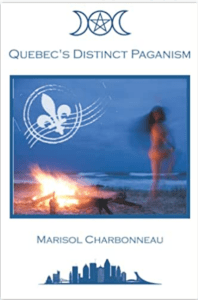
My overall favorite paranormal podcast is Timothy Renner’s Strange Familiars, which now has logged 465 episodes.
Its style is low-key. Usually people discuss their experiences with “the Other” in conversation with the host. Sometimes he and a friend or two take a late-night walk on the Appalachian Trail or another locale in south central Pennsylvania looking for strange lights, sounds, and sightings. In others, his wife, Alison, discusses with him notable long-ago crimes, paranormal experiences, and Timothy’s personal favorite—the life stories of 19th-century hermits and “wild men.”
Some time back a man from the Blackfeet Nation in Montana named Rod Williamson came on to share his stories. He must have been a regular listener who decided “I can do this too,” because he started his own podcast, Lodge Tales, which is available on Spotify, Apple Podcasts, Red Circle, and elsewhere. And of course there is a Patreon page, where he writes,
I’m a Native American from the Blackfeet Tribe in Montana. I’ve always had an interest in ghost stories and strange encounters. Today I go out and interview fellow Natives about their experiences in these areas. Join us!
Lodge Tales is a place where Native Americans can share their experiences of the supernatural, paranormal, bigfoot, ufos, or anything that comes up!

I have listened to a number of Lodge Tales episodes since Timothy Renner promo’d it on his podcast. So far, Williamson has gotten a lot of material just from family and friends there in Montana. Some of the stories sound similar to those told by the people who appear on Strange Familiars, including encounters with Bigfoot and other unusual animals.
One difference is that an early interviewee was a Blackfeet cop, whose description of multiple police units responding to a
“Goatman” sighting has become the podcast’s intro. (The first officer jumps on the radio, and he screams out, ‘Holy ****!”)

While many stories fit into the “North American paranormal” range, some are culturally distinctive. Interviewees often have stories involving hauntings at old Indian boarding schools, for example, while a young woman working in a nursing home plagued with mysterious voices declares that co-workers smudged it every month, but the voices kept returning, so they were going to try a more powerful ceremony.
Terryn (guest): “Little hands kind of like drug me up [from a stream]. . . I could see a little tiny trail [to my aunt’s house]. I feel like Little People helped me. They scare me at the same time; but at the same time they helped me and my brother to cross rivers, which is weird.
Rod (host): Little People . . . I’m really intrigued by them. They really help us a lot. I’ve heard good stories about them — and bad ones. They’re everywhere, in every country, not just here. They look like different things, too. Ours look like little Indians, like little shrunk Indians. I’m really fascinated by these stories. . . . There was something they seen in you that was worth their while, to take pity on you
. Lodge Tales, Episode 9, “Terryn and Mike”
Are there truly cultural differences in paranormal phenomena? Maybe kind-of sort-of, but “The Phenomenon” is so slippery to begin with that it is hard to say.
One thing that I appreciate about Lodge Tales geographical. It seems like most of American paranormal podcasting and video-making centers on the southern Appalachian Mountains. So it’s good to get something from the Rocky Mountains too.

 Some interesting things are happening in South Dakota, First, on July 22, 2022 the Oglala SIoux Tribal Council (Pine Ridge)
Some interesting things are happening in South Dakota, First, on July 22, 2022 the Oglala SIoux Tribal Council (Pine Ridge)  As ever, book reviews in The Pomegranate: The International Journal of Pagan Studies are open-access free downloads. Here are links to the four in this issue.((I receive a small commission on Amazon sales, which helps to pay for this website.))
As ever, book reviews in The Pomegranate: The International Journal of Pagan Studies are open-access free downloads. Here are links to the four in this issue.((I receive a small commission on Amazon sales, which helps to pay for this website.))

 The Imagination of Plants: A Book of Botanical Mythology
The Imagination of Plants: A Book of Botanical Mythology








